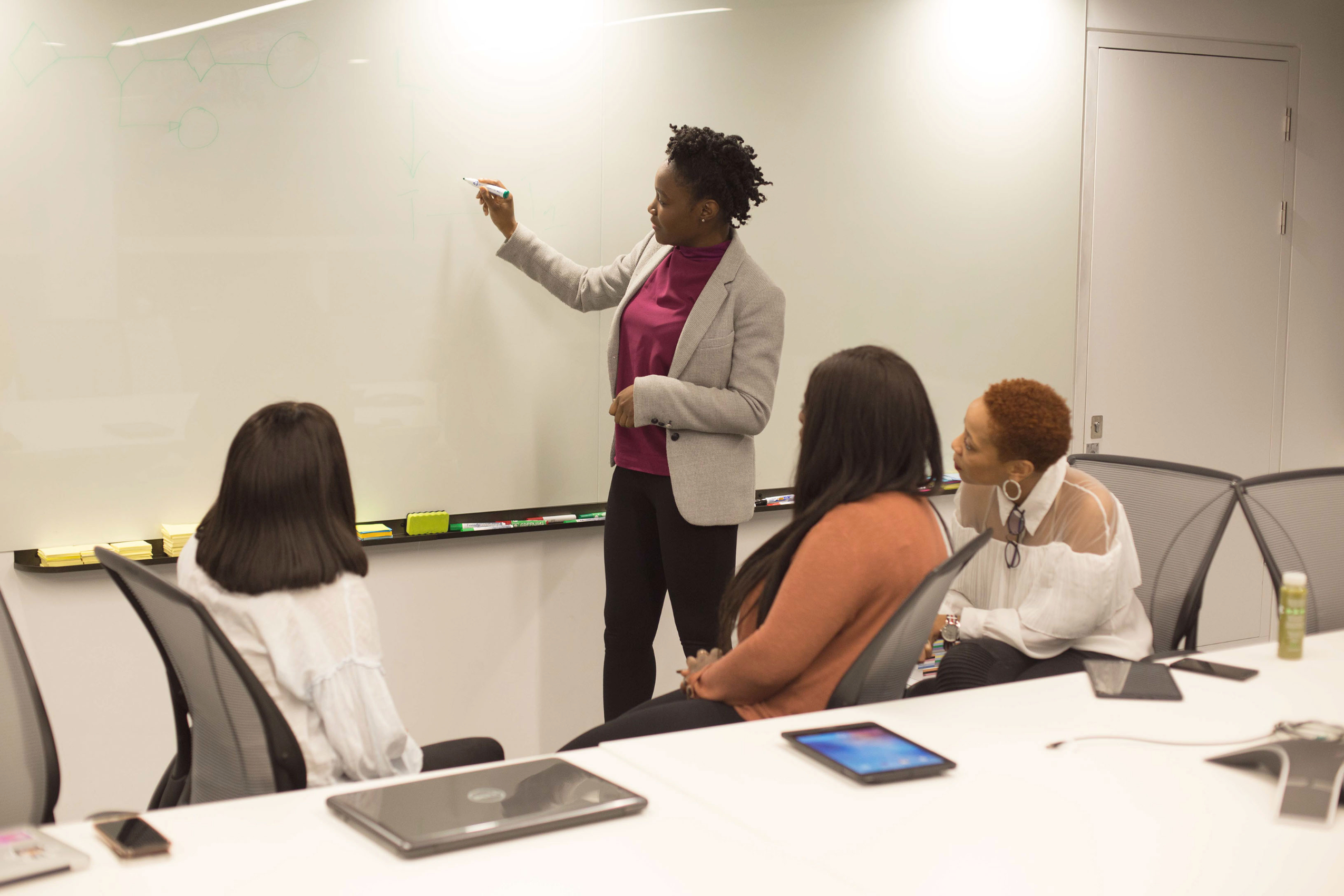Chapter 2 Learning Preferences
2.3 Examine Applicable Strategies
It’s good to understand learning styles, however just knowing your preference, however, doesn’t automatically provide a solution for how to do your best in your courses. For example, although you may be a kinesthetic learner, you’ll likely still have textbook assignments (reading) as well as lecture classes (listening). All students need to adapt to other ways of learning.
The following sections look at the key ways in which learning occurs in college classes and offer some suggestions about how to adapt your strengths for success.
Reading
Reading skills are critically important for adult students. Most classes involve reading assignments. Although many instructors may cover some of the textbook’s content in lectures or class discussions, students cannot skip the reading assignments and expect to do well.
If your personal learning preference is linguistic and independent—that is, if you learn well by sitting alone and reading—then you will likely not have difficulty with your university reading. Here are some tips to help maximize your learning:
- Underline and highlight key ideas when reading.
- Take good notes on your reading, using your own words.
- Write descriptions that summarize information presented in nonverbal modes, such as through charts and graphs.
- Do all optional and supplemental readings.
- Take good notes in class, as you may remember more from your written words than from the instructor’s spoken words.
- If a class involves significant non-reading learning, such as learning hands-on physical processes, study with other students who are kinesthetic or “doing” learners.
If you have a different learning style, then you may need to give more attention to your reading skills. Always allow plenty of time for reading assignments—rushing makes it harder to understand what you are reading. Do your reading at times of the day when you are most alert. Find a quiet, comfortable place conducive to reading.
Try also to maximize your learning through your personal preference. If you learn better by listening, for example, sit up front in lecture classes where you can see and hear the instructor better. If needed, ask if you can record an instructor’s lectures and then listen again at a convenient time, such as when commuting to class or work, or while doing the laundry. If you are more of a visual learner, sit in class where you can see PowerPoint slides and other visual presentations most clearly. Use a visual approach in your class notes, as described in Module 5.6 “Study Skills: Note-Taking.” Check out whether video podcasts may be available for reviewing lectures. Try to relate all of these visual images to the textbook’s content when you’re reading an assignment. In addition, pay special attention to illustrations and diagrams in the book, which will further help you understand the written ideas and information. If you are more of an interpersonal learner, form a study group with other students and talk with others about the course topics. Take advantage of your instructors’ office hours to help clarify your understanding after reading assignments.
Listening

Listening skills are as important as reading skills. Students are expected to listen to their instructors in class and remember and understand what is said. In discussion classes, listening is important also for participating well in discussions.
If you favour listening, then you may already be good at understanding class lectures. Chapter 5 “Study Skills” provides tips to help you pay close attention, take good notes, and recall the information and ideas you have heard. Here are some more tips:

- Sit where you can best hear the instructor, away from other distractions.
- Study with other students and listen to what they say about the course material. Hearing them talk from their class notes may be more helpful than reviewing your own written notes.
- Record lectures and listen to them again later when reviewing material before a test.
- When studying, read your notes aloud. Review previous tests by reading the questions aloud and speaking your answers. If a section in your textbook seems confusing, read it aloud.
- Talk with your instructor if you feel you are not understanding course readings.
- Use rhymes or acronyms to recall verbal information.
- Explore supplemental learning aids, such as audio and video podcasts (e.g. from Ted Talks or even from other educational institutions) on the course’s subject matter.
Seeing
A “seeing” learner learns more effectively through seeing than through reading or listening. Some courses include demonstrations and physical processes that can be observed. If you are a visual learner, work on developing your reading and listening skills, too, because you will need to learn in these ways as well. Here are some tips to improve learning related to seeing:
- Pay special attention in class to visual presentations, such as charts, diagrams, and images.
- Take lecture notes using a visual approach. Do the same when taking notes on class readings. Use diagrams, different colours, lists, and sketches to help you remember.
- Use video podcasts or other visual aids for reviewing lectures.
- Pay special attention to your textbooks’ illustrations and diagrams.
- If your instructor or textbook uses few visuals to help you understand and recall information and ideas, try to imagine how you would present this information visually to others if you were giving a class presentation. In your notes, create sketches for a PowerPoint slideshow capturing the highlights of the material.
- Study with other students who may learn better by reading or listening, and watch how they explain the material.
Doing
People who learn best by doing are often attracted to careers with a strong physical or hands-on component, which can vary from athletics to technologies and trades. But these students may need to use other learning skills as well. Here are some tips to help maximize your learning related to doing:

- Try to engage all your senses when learning. Even when reading about something, try to imagine what it would feel like if you touched it, how it might smell, how you could physically manipulate it, and so forth.
- Think about how you yourself would teach the topic you are presently learning. What visuals could you make to demonstrate the idea or information? Imagine a class lecture as a train of boxcars and think about what things you would put in those cars to represent the lecture topics.
- When it becomes difficult to concentrate when reading while sitting in a quiet place, get up and move around while studying; make gestures as you read aloud.
- Use your hands to create a range of study aids rather than just taking notes: make charts, posters, flash cards, and so on.
- When taking notes, sketch familiar shapes around words and phrases to help you remember them. Try to associate abstract ideas with concrete examples.
- The act of writing—handwriting more than typing at a keyboard—may increase retention; write key things several times.
- Study with other students who may learn better by reading or listening.
Feeling
Feeling learners focus on the emotional side of information and learn through personal connections. Too often they may feel that a textbook or a class is “dry” or “boring” if it focuses exclusively on written information. In addition to improving their reading and listening skills, students with this style can enrich their learning by focusing on what they and others feel about the information and ideas being learned. Here are some tips to help maximize your learning related to feeling:
- Try to establish an emotional connection with the topic you are learning. In a history class, for example, imagine yourself as someone living in the period you are studying: what would you feel about the forces at work in your life? In a science class, think about what the implications of a particular scientific principle or discovery might mean for you as a person or how you yourself might have felt if you had been the scientist making that discovery.
- Talk with your instructor during office hours. Express your enthusiasm and share your feelings about the subject. Even instructors who may seem “dry” in a lecture class often share their feelings toward their subject in conversation.
- Do supplemental reading about the people involved in a subject you’re studying. For example, reading an online biographical sketch of a historical figure, scientist, or theorist may open your eyes to a side of the subject you hadn’t seen before and increase your learning.
- Study with other students who may learn better by reading or listening. Talk with them in a personal way about what the material means to them. Try teaching them about the topic while explaining your feelings about it.
- Also try the strategies listed for the “doing” learning style.
Your Style, Your Instructor’s Style
Many classes tend to be taught using certain learning styles. Instructors in large lecture classes, for example, generally emphasize listening carefully and reading well. Don’t worry, however, if these are not your particular strengths, for much of this book focuses on learning study skills. Take responsibility for your own learning, rather than expecting the instructor to help you through the subject in your own personal way. For example, if your strength is as a visual learner but your instructor simply stands at a podium and lectures, then provide your own visual stimulation by sketching concept maps in your notes or by visualizing how information being presented might look in a pie chart or graph.
As you move further into your curriculum, you will likely have more small classes with class discussions, demonstrations, group presentations, and other learning activities. Once you are in classes closely related to a career path that interests you, you will find your personal style more relevant to the kinds of material you will be learning.
Much learning in college and university also comes from interactions with others, who often have different learning preferences. Be open to interacting with other students and instructors who are different from you, and you will find yourself learning in ways that may be new to you.
Exercise: Learning Preferences
- How would you describe your personal learning style preference?
- Name an activity from which you generally learn very well.
- Name a type of learning experience you may have difficulty with.
- For the activity above, list at least two strategies you can use to improve your learning effectiveness when in that situation next time.
- If you experience a situation in which your personal learning style preference seems to clash hopelessly with an instructor’s teaching style, what is your best course of action?
- Ask the instructor to teach in a different way.
- Drop the class.
- Adapt your style or study with other students.
- Complain to the dean.
- Explain your answer to question 5.
Text Attributions
- This chapter was adapted from “How You Learn” in University Success by N. Mahoney, B. Klassen, and M. D’Eon. Adapted by Mary Shier. CC BY-NC-SA 4.0 Licence.
Media Attributions
- An Instructor Lectures © UKBlackTech is licensed under a CC BY (Attribution) license
- Whiteboard Diagram © WOCinTech Chat. Microsoft NYC is licensed under a CC BY (Attribution) license

